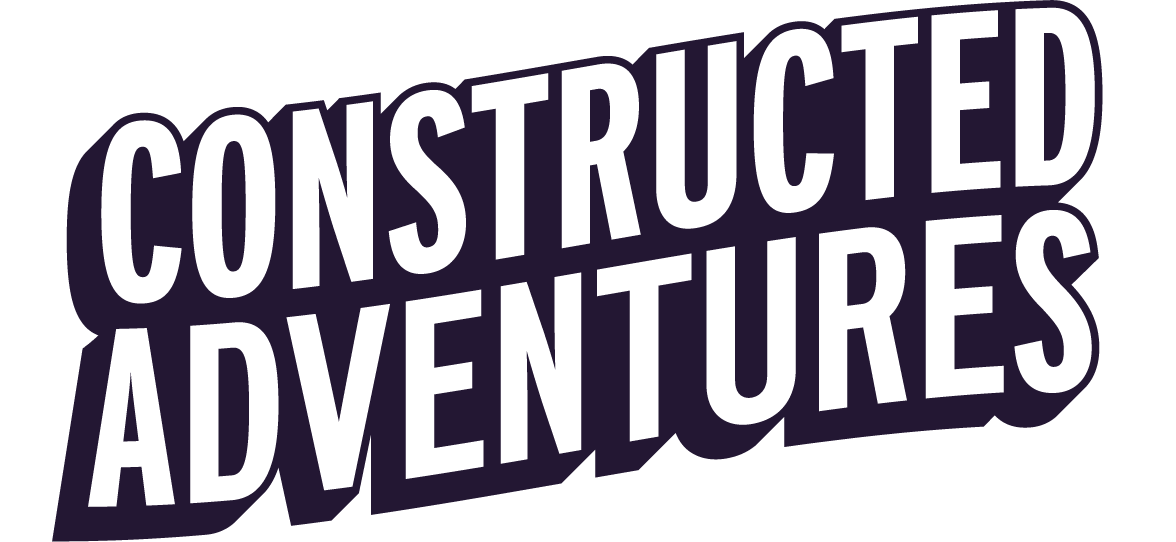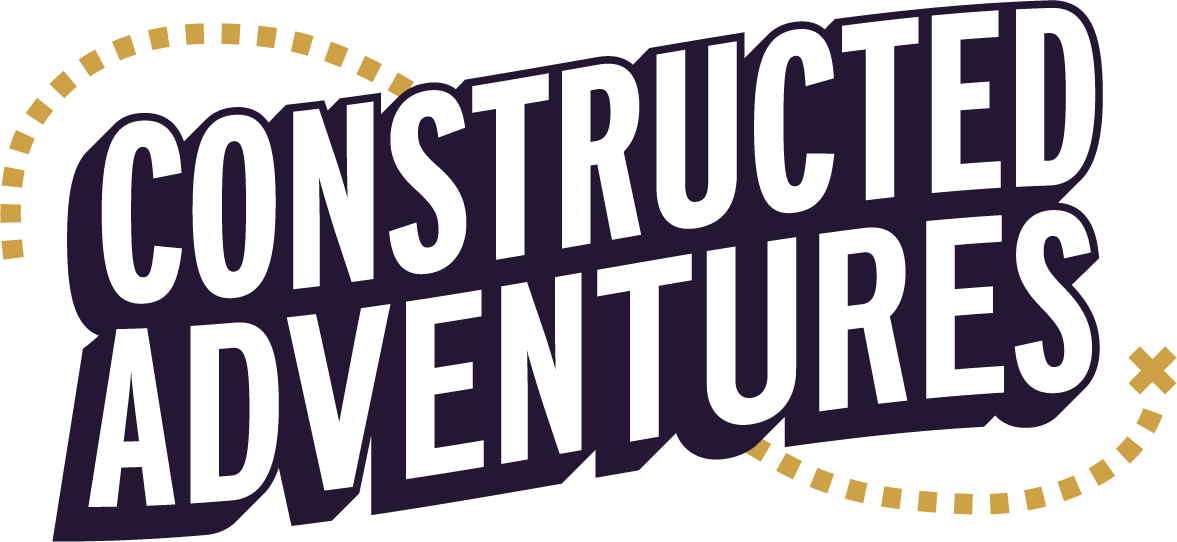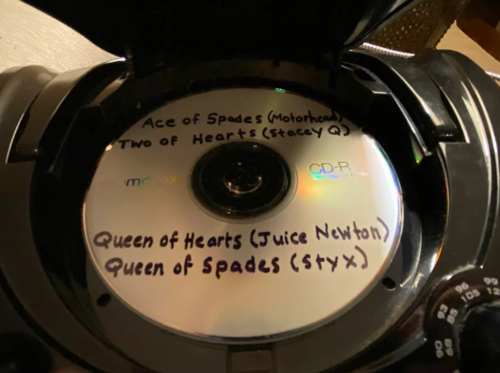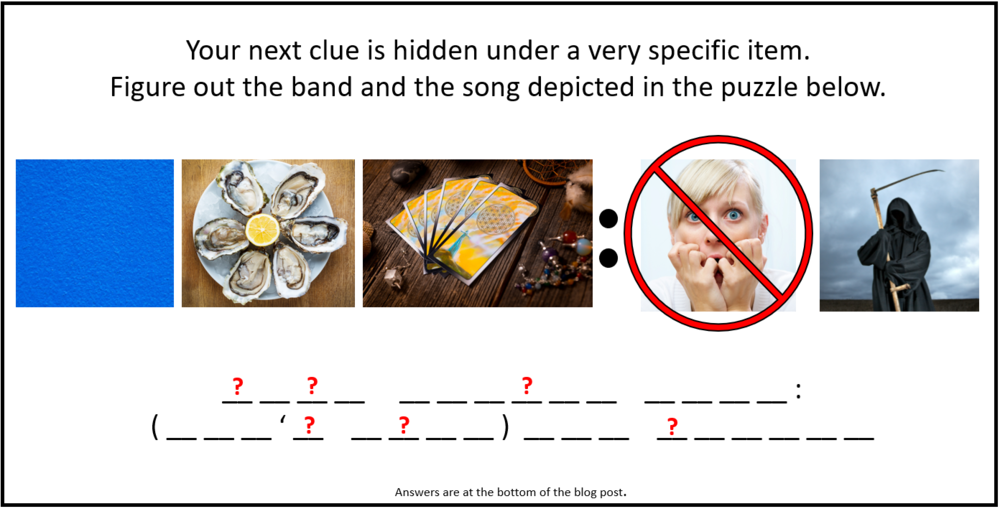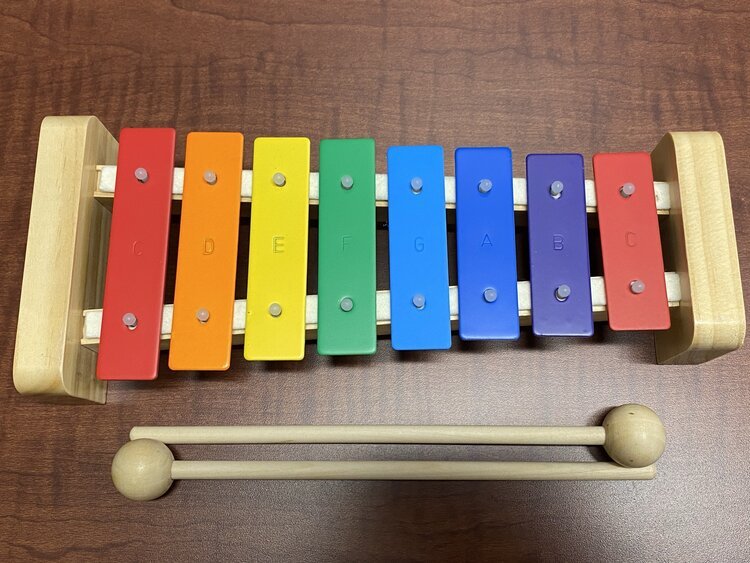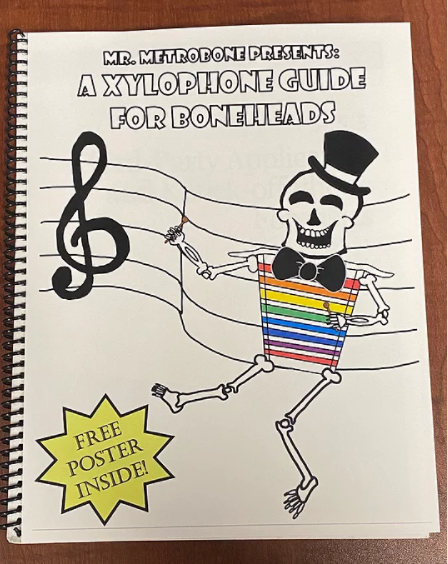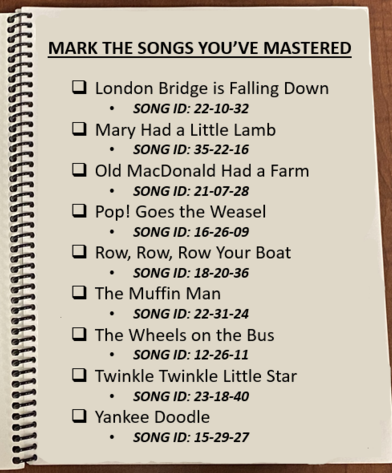Music makes the Hunt go ‘Round: 3 Musical Puzzles for your Next Adventure
When creating puzzles, we tend to draw from our own strengths and interests. However, it is essential to be aware of the capabilities of your audience and fine-tune your puzzles to an accommodating level.
While you yourself may have a deep passion for music, your players may think that Bach is just the sound a chicken makes. If you desire to share your love for music in your treasure scavenger hunts, here are three simple music-themed puzzles that can be enjoyed by all of your players, regardless of their musical background.
THEMED PLAYLISTS AND SONG TITLES
Both the titles of playlists and the songs contained within can be used as a puzzle or clue to challenge your players. Gone are the days when you would have to patiently sit by the radio in the hopes to record your favorite songs to a mix tape. With online music sites such as Spotify and Apple Music, you can easily construct a playlist that best meets your needs.
Here are two examples of playlist puzzles I’ve used myself:
Scenario 1:
After locating a cell phone and the appropriate PIN code, players were given access to the Spotify Music application. Inside the app there were three playlists, two of them were red herrings, but the third referenced the current scenario: “Escape Room Ambiance”. Reading the names of the songs in that playlist led them to the next clue.
Scenario 2:
Throughout the scavenger hunt, players were tasked with finding and collecting playing cards through exploration and solving puzzles. These cards were used for the final puzzle. After solving a music-themed puzzle and removing the lock from a CD player, they found a CD disk with songs all named after playing cards.
Three Rapid-Fire Ideas:
Although the idea of mixtapes appears to be a thing of the past, there has been a resurgence with their inclusion in Marvel’s Guardians of the Galaxy films. Now’s a great time to blow the dust off the old Walkman and create a special mixtape for a space-themed adventure.
Use familiar tunes and lyrics to point your players toward certain locations around the house. This ploy requires the player(s) to be familiar with the location of the hunt and the hiding locations that the songs allude to.
Here are a few quick examples:
Play the Jurassic Park theme to lead players to a favorite stuffed dinosaur.
Play “Who Let the Dogs Out” by the Baha Men to lead players to a dog’s leash, or to the dog itself.
Play “Hedwig’s Theme” from the Harry Potter soundtrack to lead players to a physical clue hidden in a set of Harry Potter books or movies.
Play the classic church tune, “He’s Got the Whole World in His Hands”, to lead players to a globe or map.
Instead of just handing your player a list of song titles, challenge them to determine the song titles themselves. You can have them figure out the songs by ear or have them solve pictorial clues, like in the puzzle below.
MUSICAL SCALES:
DO-RE-MI-FA-So…. here’s another accessible music idea for your adventures. The musical scale is one of the earliest music lessons a student will learn in school. If you are feeling rusty on the subject, listening to Julie Andrews sing you through the scale in The Sound of Music will catch you up to speed.
A simple puzzle that can put this knowledge to the test is to describe the notes in picture form. Here is an example puzzle that uses generic words that phonetically sound like the musical scale. Take note of the fact that the word “scale” is bolded and underlined to draw the solver’s attention to it. This is a clue to the theme of the puzzle. Maria Von Trapp is the name of Julie Andrew’s character in The Sound of Music, which provides an additional hint if the solver needs it.
If you know your audience well, you can have a little more fun with this. Here is another example with the same steps and solution as the puzzle above. However, this version is created with specific players in mind. The same puzzle would not work for a player who did not understand these specific pop-culture references.
MUSICAL INSTRUMENTS:
In the movie, The Goonies, the characters are tasked with playing an old piano made from human bones to progress in their treasure hunt. The idea of playing an instrument can frighten a lot of players, so how can we take that concept and make it accessible to everyone?
There are two routes to simplify the process of playing an instrument- the first is to mark up a real instrument. For example, you can put stickers or other identifying marks on a real piano to signify different keys. Then you can instruct your players to press certain keys based on the markings.
The other, and simpler route, would be to pick your musical prop from the large range of children’s instruments. You know the ones I’m talking about: big, bright, and obnoxious. These are the toys you buy your young niece or nephew to torture their parents. These instruments usually have less buttons or ways to play them than their professional counterparts do, but their buttons are usually very distinct and easy to incorporate into your adventure.
Here’s a practical example- For an escape room that I constructed for an office event, I used the cheap children’s xylophone seen below. Each key is easily identifiable by letter and color.
After locating a key and opening a cabinet above the xylophone, the players revealed a series of hanging musical notes. To deter players from simply humming the tune, I placed all of the notes at the same height. Regardless of the musical know-how of the players, it was very clear that these notes had to be played on the xylophone and the bright colors were easy to match up with the keys.
In addition to the music notes and the xylophone, players were also given a fake book of sheet music. They were able to identify that the song they played on the xylophone was Mary Had a Little Lamb, and they were able to look that song up in the music book and use the provided code to open another lock in the room. The list of songs also acted as a fail-safe in case one of the groups could not identify the song by ear right away. They would be able to determine that the song they were trying to identify HAD to be one of the songs listed in the book.
Something to look out for:
Do me a favor: Try humming the first few lines of Twinkle, Twinkle, Little Star. Now hum the first few lines of the Alphabet Song and Baa Baa Black Sheep. Sound familiar? There are multiple songs that either follow a similar rhythm or use the same notes, and can be easily mixed up if you are listening to just the instrumentals.
If you are creating a puzzle that requires players to identify a song via an instrumental rendition, make sure it is unique. Have a few others test the puzzle out to see if they all come up with the same answer.
NOW IT’S YOUR TURN!
Although adding musical puzzles to your treasure scavenger hunt won’t transform your players into music aficionados, it can help jazz up the entire experience. What creative and accessible music-themed challenges can you come up with?
We welcome you to share your experiences old, new, good, and bad on the Constructed Adventures subreddit and on our discord channel. You can also find us on Instagram at @ConstructedAdventures.
Remember, every day is an opportunity to learn something new!
